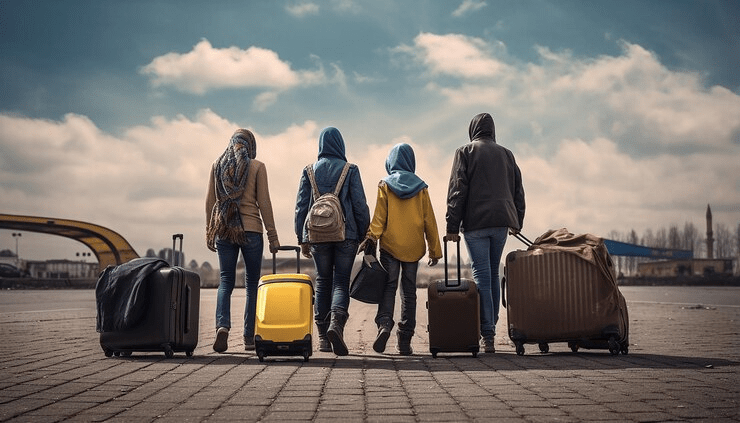Immigration Explained: A Comprehensive Guide for 2025 and Beyond
Immigration is one of the most transformative journeys an individual or family can undertake. It's not just about relocating—it's about embracing a new identity, finding better opportunities, and contributing to a global community. With millions of people crossing borders every year, immigration continues to shape economies, diversify cultures, and build future-ready societies.
This in-depth guide breaks down the concept of immigration, why people choose to move abroad, and how you can successfully navigate the process in a changing global landscape.

1. What Drives People to Immigrate?
Across continents and cultures, the reasons for immigration vary widely, but most decisions are rooted in one common theme: the pursuit of a better life.
1.1 Seeking Economic Progress
Better-paying jobs, stable employment, and stronger currencies often pull individuals toward developed nations where their skills are in demand.
1.2 Accessing Higher Education
Students from all over the world dream of attending globally ranked universities, gaining international exposure, and increasing their future career prospects.
1.3 Escaping Conflict and Instability
Political unrest, war, persecution, or natural disasters push people to seek safety and legal protection in more peaceful nations.
1.4 Reuniting with Loved Ones
Many individuals move abroad to live with spouses, children, or extended family already settled in another country.
1.5 Quality of Living
Healthcare, education, public safety, and environmental quality are among the factors that motivate people to resettle in developed nations.
2. Major Types of Immigration Pathways
Immigration isn’t one-size-fits-all. There are multiple pathways depending on your goals, background, and the destination country’s laws.
2.1 Skilled and Economic Migration
Designed for professionals, tradespeople, and investors who can boost a country’s economy, this category often requires qualifications, work experience, and language skills.
2.2 Family-Based Sponsorship
Permanent residents or citizens can bring close family members through sponsorship programs that emphasize unity and support.
2.3 Student Migration Routes
Young adults relocate to pursue higher education abroad, often with options to work part-time and transition into permanent residency after graduation.
2.4 Humanitarian and Refugee Streams
People fleeing violence, political persecution, or environmental disasters may qualify for asylum or humanitarian protection in certain countries.
2.5 Temporary Workers and Interns
Short-term work permits allow skilled or seasonal workers to fill labor shortages in host countries while gaining international experience.
3. The Journey: How Immigration Works Step by Step
Though every country has its own system, the process of immigration generally follows a structured path. Understanding each step can prevent delays or refusals.
3.1 Evaluate Your Options
The first stage involves identifying which immigration stream you qualify for—student, skilled worker, investor, refugee, or family class.
3.2 Prepare the Required Exams
Most programs require standardized language tests such as IELTS, PTE, or TOEFL to evaluate your ability to integrate into an English or French-speaking country.
3.3 Submit a Formal Application
Once eligible, you’ll need to prepare a comprehensive file with personal documents, proof of funds, police clearance, and academic or work-related credentials.
3.4 Wait for the Decision
Government agencies review your profile, conduct background checks, and may call you for an interview before making a decision.
3.5 Receive a Visa or Permit
If approved, you’ll get a visa, residence permit, or landing documents depending on your immigration category.
3.6 Resettle and Integrate
Post-arrival, you'll need to find housing, open a bank account, register for healthcare, and explore settlement services.
To read more articles: https://esseindia.com/
Apply Now!
Comments
Post a Comment